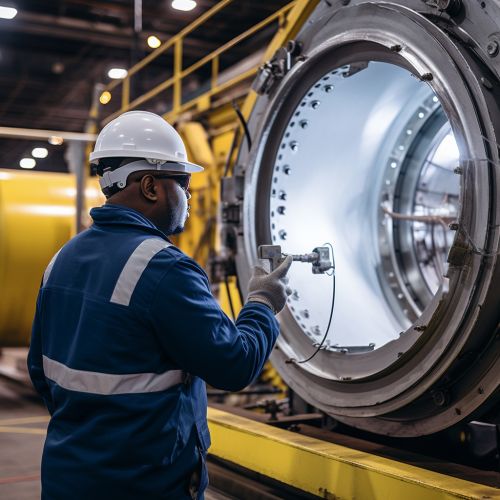Safety Engineering
Introduction
Safety engineering is a field of engineering that focuses on the design of systems to prevent accidents and mitigate the effects of accidents when they do occur. It is a discipline that uses principles of engineering, applied science, and statistics to design and implement systems that ensure safety in the operation of complex systems such as industrial plants, transportation systems, and software systems.
History
Safety engineering as a distinct discipline emerged in the early 20th century, in response to the increasing complexity of industrial systems and the corresponding increase in accidents and injuries. The discipline has evolved over time, incorporating advances in technology and changes in societal attitudes towards safety. Today, safety engineering is a critical component of many industries, including manufacturing, transportation, and information technology.
Principles of Safety Engineering
The primary goal of safety engineering is to prevent accidents and reduce the severity of accidents when they do occur. This is achieved through a combination of design principles, risk assessment techniques, and safety management practices.
Design Principles
Design principles in safety engineering are based on the concept of "inherent safety". This involves designing systems in such a way that they are inherently safe, rather than relying on add-on safety features or operational procedures to ensure safety. Inherent safety principles include simplification, substitution, minimization, moderation, and segregation.
Risk Assessment
Risk assessment is a key component of safety engineering. It involves identifying potential hazards, assessing the likelihood of those hazards leading to an accident, and evaluating the potential consequences of such an accident. Risk assessment techniques include quantitative risk assessment (QRA), qualitative risk assessment, and probabilistic risk assessment (PRA).
Safety Management
Safety management involves the implementation of policies and procedures to ensure that safety is maintained throughout the lifecycle of a system. This includes safety planning, safety training, safety inspections, and safety audits.
Applications of Safety Engineering
Safety engineering is applied in a wide range of industries and contexts. Some of the key applications include:
Industrial Safety
In the industrial context, safety engineering is used to design and operate manufacturing plants, chemical plants, and other industrial facilities in a way that minimizes the risk of accidents. This includes the design of safety systems such as emergency shutdown systems, fire and gas detection systems, and safety instrumented systems.
Transportation Safety
In the transportation sector, safety engineering is used to design and operate transportation systems such as roads, railways, and air traffic control systems to minimize the risk of accidents. This includes the design of safety features such as crash barriers, traffic signals, and vehicle safety systems.
Software Safety
In the field of software engineering, safety engineering is used to design and operate software systems in a way that minimizes the risk of software failures leading to accidents. This includes the use of formal methods, software testing, and software safety assurance techniques.
Future Trends in Safety Engineering
The field of safety engineering is constantly evolving, driven by advances in technology and changes in societal attitudes towards safety. Some of the key trends in safety engineering include:
Increased Use of Automation
The increasing use of automation in various industries is driving the need for safety engineering to ensure that automated systems are safe to operate. This includes the design of safety systems for autonomous vehicles, industrial robots, and automated manufacturing systems.
Focus on Human Factors
There is an increasing focus on human factors in safety engineering, recognizing that human error is a major cause of accidents. This involves designing systems in a way that minimizes the potential for human error, and training operators to work safely with complex systems.
Integration of Safety and Security
With the increasing reliance on digital systems, there is a growing recognition of the need to integrate safety and security. This involves designing systems in a way that ensures both their physical safety and their resilience to cyber threats.
See Also
Industrial Engineering Transportation Engineering Software Engineering


